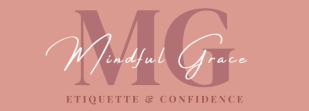 Image Source: bangoland; “Concept of Etiquette.”, 2025. Accessed via Standard License.
Image Source: bangoland; “Concept of Etiquette.”, 2025. Accessed via Standard License.The concept of etiquette might seem antiquated to some people. However, understanding the modern definition of etiquette has never been more crucial for navigating today’s complex social landscape. As an etiquette expert, I believe it’s time to reframe how we think about proper behavior in the 21st century.
What Is Etiquette Today?
The traditional definition of etiquette—”the conduct or procedure required by good breeding or prescribed by authority”—feels stiff and outdated. Today’s etiquette is far more nuanced and inclusive. Modern etiquette is the mindful, intentional practice of creating respectful, kind, and orderly interactions across all environments, from family gatherings to professional meetings to digital communications.
At its heart, etiquette remains rooted in timeless principles: respect, courtesy, tact, restraint, self-command, and responsibility. These foundational values haven’t changed, but how we express them has evolved dramatically with our society and technology.
The Evolution of Proper Behavior
Historically, the word “etiquette” comes from the French “estiquette,” meaning “ticket” or “label”—originally referring to the ceremonial rules observed in royal courts. While the formality has relaxed, the underlying purpose remains the same: showing up in ways that are recognizably respectful.
As one wise friend noted, “Etiquette comes not so much from lifting your pinkie as from lifting others’ spirits.” This perfectly captures the essence of contemporary etiquette—it’s about connection, not perfection. The goal isn’t rigid adherence to arbitrary rules, but rather acting in ways that help others feel welcome and accepted.
Essential Areas of Modern Etiquette
Today’s etiquette encompasses several key areas that reflect our interconnected world:
- Digital Communication
From email etiquette to social media manners, understanding how to communicate respectfully online is crucial. This includes being clear, concise, and kind in all digital interactions.
- Professional Interactions
Workplace etiquette has evolved to include virtual meeting protocols, collaborative workspace behavior, and inclusive communication practices.
- Social Dining
While formal dining rules still have their place, modern dining etiquette focuses more on consideration for others and creating comfortable shared experiences.
- Personal Interactions
This covers everything from introductions and greetings to conversation skills and personal space awareness.
- Inclusive Behavior
Modern etiquette emphasizes welcoming diversity and ensuring everyone feels included and respected.
Practical Examples of 21st Century Etiquette
What does good etiquette look like in practice today? Consider these examples:
- Listening to understand rather than waiting for your turn to speak.
- Being authentic and tactful in your communications.
- Helping others feel comfortable in social situations.
- Taking responsibility for your words and actions, including offering genuine apologies when needed.
- Embracing differences and excluding no one from kindness.
- Offering assistance without being asked, like helping a colleague with an overdue project.
- Being forgiving when others make social missteps.
- Ensuring digital communications are clear and considerate.
The Importance of Etiquette in Today’s World
In our increasingly polarized society, etiquette serves as a bridge that enables civil discourse and mutual respect. It’s not about putting on airs or following rigid protocols—it’s about creating space for genuine human connection.
Good etiquette requires situational awareness: understanding where you are, who you’re with, and what’s socially appropriate in that context. When you combine this awareness with a kind heart and genuine intention to treat others well, you’ll naturally navigate most social situations with grace.
Why Etiquette Matters More Than Ever
Living an “etiquette-ful” life is foundational to maintaining a free and civil society. Unlike laws, etiquette cannot be legislated—it’s a personal choice that each individual makes. In our digital age, where face-to-face interactions are sometimes limited, the principles of good etiquette help us maintain our humanity and connection to others.
The beauty of modern etiquette lies in its accessibility. You don’t need to be born into privilege or attend finishing school to practice good manners. Etiquette is simply the ongoing practice of showing consideration for others through your words and actions.
The modern definition of etiquette isn’t about perfection—it’s about intention. It’s the commitment to show up with respect, kindness, and consideration for others, whether you’re in a boardroom, at a family dinner, or engaging on social media.
As we navigate an increasingly complex world, etiquette serves as our compass, guiding us toward interactions that uplift rather than diminish, that include rather than exclude, and that build bridges rather than walls. After all, in a world where we can choose how to treat others, why wouldn’t we choose kindness?
You may also enjoy reading . . .


